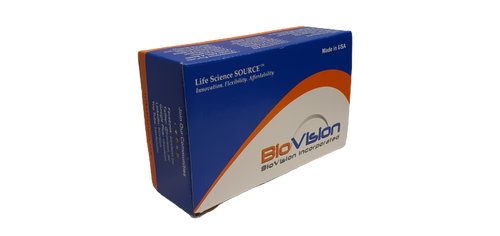Product Description
Biovision | K2011 | Aldehyde Dehydrogenase 2 Inhibitor Screening Kit (Fluorometric) DataSheet
Aldehyde Dehydrogenase 2 (ALDH2), mitochondrial is a member of the ALDH superfamily that participates in multiple metabolic pathways including the oxidation of toxic biogenic and environmental aldehydes. ALDH2 is a key enzyme located in the mitochondrial matrix. It plays an important role in ethanol metabolism by converting acetaldehyde, a carcinogenic metabolite of ethanol to acetate. Imbalances of ALDH2 have been linked to both alcoholism and alcohol sensitivity in people. Reduced ALDH2 activity has been strongly correlated with reduced alcohol consumption and reduced incidences of alcoholism, which led to the development of selective ALDH2 inhibitors as antidipsotropic or alcohol aversive agents for treating alcoholism. Disulfiram, an alcohol-aversive drug inhibiting ALDH2 has been approved by the FDA and is used clinically for over 40 years for treating alcohol dependency. However, the drug is a non-specific alkylating agent leading to many adverse side effects and drug-drug interactions. Thus, novel and specific inhibitors of ALDH2 free of the negative side effects could be used in aversion therapy. BioVision’s Aldehyde Dehydrogenase 2 Inhibitor Screening Kit provides a quick and sensitive way of screening, studying and characterizing potential inhibitors of ALDH2. In this assay, acetaldehyde is oxidized by ALDH2 to form NADH, which then couples with PicoProbe™ to generate a fluorescence signal measured at Ex/Em = 535/587 nm. The percentage inhibition can be determined by comparing the activity of ALDH2 treated with test inhibitor(s) vs untreated control.
Alternate Name :
Tag Line : For screening, studying and characterizing potential inhibitors of ALDH2
Summary : BioVision’s Aldehyde Dehydrogenase 2 Inhibitor Screening Kit provides a quick and sensitive way of screening, studying and characterizing potential inhibitors of ALDH2. In this assay, acetaldehyde is oxidized by ALDH2 to form NADH, which then couples with PicoProbe™ to generate a fluorescence signal measured at Ex/Em = 535/587 nm. The percentage inhibition can be determined by comparing the activity of ALDH2 treated with test inhibitor(s) vs untreated control.
Detection Method : Fluorescence at Ex/Em = 535/587 nm
Sample Type : ALDH2 inhibitors
Species Reactivity : Human
Applications : Screening or characterizing ALDH2 inhibitors
Features and Benefits : A quick and sensitive way of screening, studying and characterizing potential inhibitors of ALDH2
 Euro
Euro
 USD
USD
 British Pound
British Pound
 NULL
NULL












